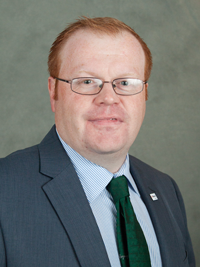InTouch - July 2025

Cathal Bohane
Head of InTouch Nutrition
June brought some welcome rain to support grass growth, with much of the country surpassing the average rainfall for the month by the halfway point. The country is experiencing ‘microclimate’ conditions throughout, where some areas received more than their average May rainfall, while others received only a third of it. This means a one-size-fits-all approach cannot be applied, and although there are many potential solutions to grassland management issues, the one chosen will likely be unique to your farm.
Grass growth is now exceeding 70kg DM/ha/day, which is good at high stocking rates. However, with an average stocking rate of 2.7 cows/ha in Ireland, grass is currently growing faster than it is being consumed. This might not be noticeable on a daily basis, but over the course of a few weeks, the farm and grass covers can get away from you. At this stage, the rotation length should be less than three weeks, and it is important to stay close to your target pre-grazing cover for quality, production, and future rotations.
Target grazing cover = stocking rate × demand × rotation length + residual
Excess grass at this time of year is probably one of the main nutritional issues we see on farms. Cows will struggle to maintain production, milk protein levels will drop, and although the solution is known, its implementation can take time. Grass quality may take several rotations to fully recover. As mentioned in the last article, grassland management often involves operating on the edge, and it is sometimes better to manage a deficit than a surplus. If you think you are heading towards a grass surplus, there are a few actions you can take, outlined below. However, these need to be implemented quickly:
Increase demand
Reduce the amount of supplement being fed or increase the stocking rate by bringing more animals onto the grazing block.
Remove surplus
Whether or not you’re close to the second cut, surplus grass should be removed immediately. Do not wait for it to ‘bulk up’, as we want this grass back in the rotation within three weeks. Bales or silage will also be of higher quality if cut now rather than later.
Reseed
This is more of a long-term strategy, but if there is sufficient surplus, it’s a good opportunity to remove long-term underperforming paddocks.
Fertiliser
Fertiliser use can be reduced, as you don’t want to promote additional growth that is not needed.
Pre-mowing and topping are also useful methods to manage strong or under-grazed paddocks. These have both advantages and disadvantages, but they should not be used excessively or as long-term solutions. Overuse often indicates an underlying surplus issue that is better addressed by the strategies above.







